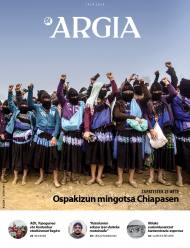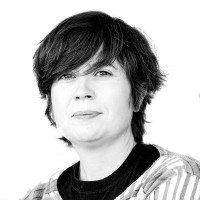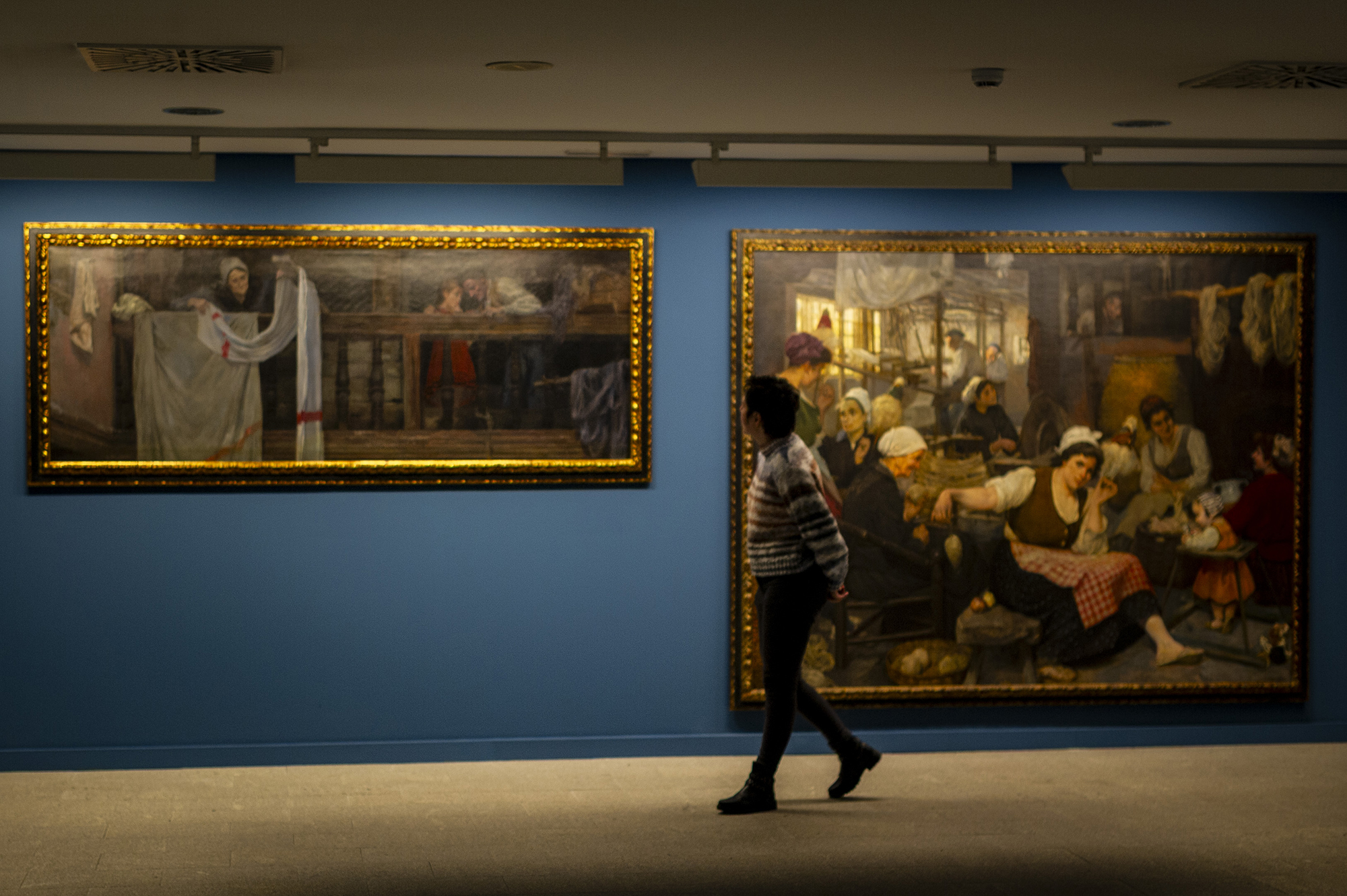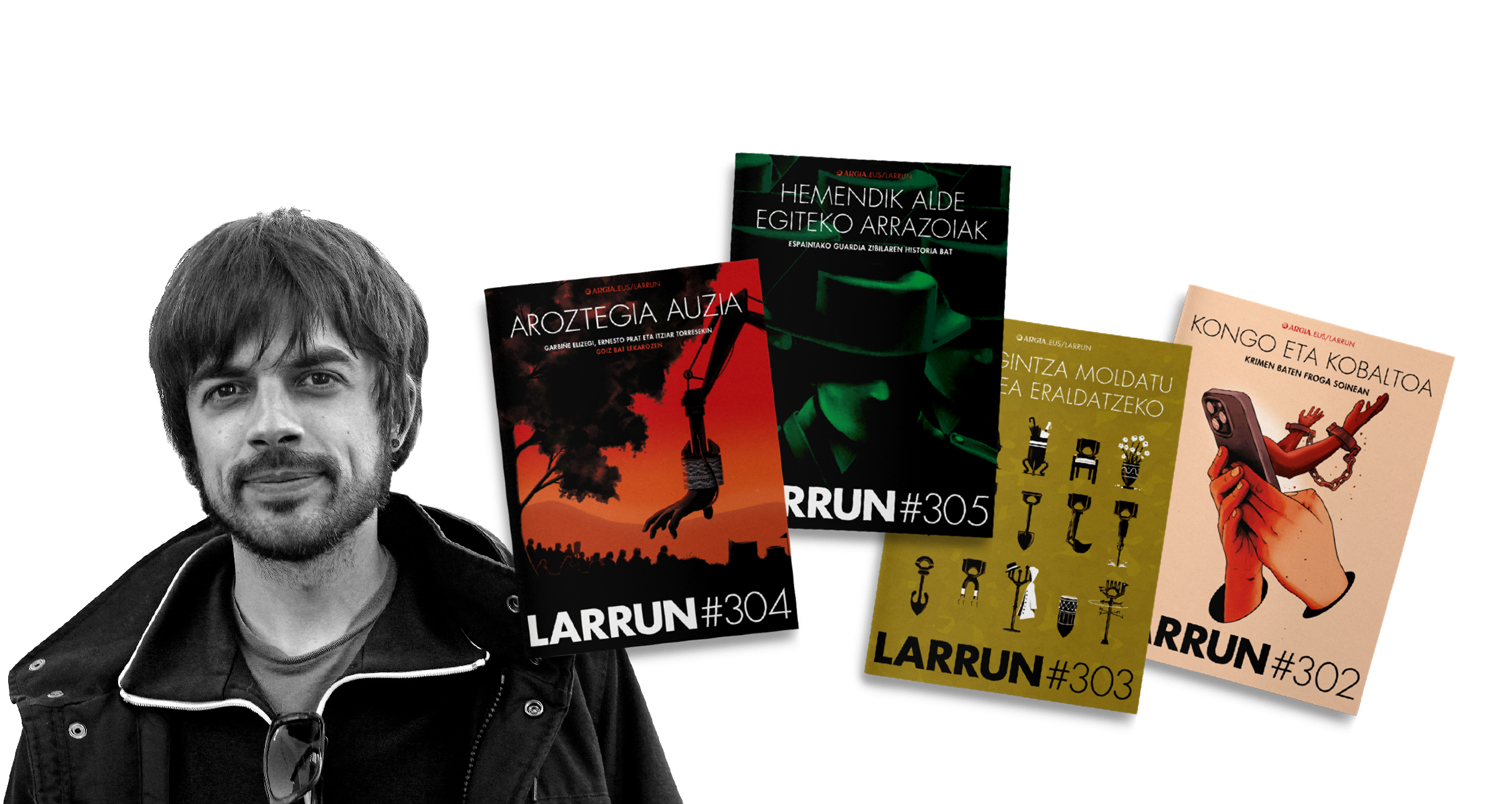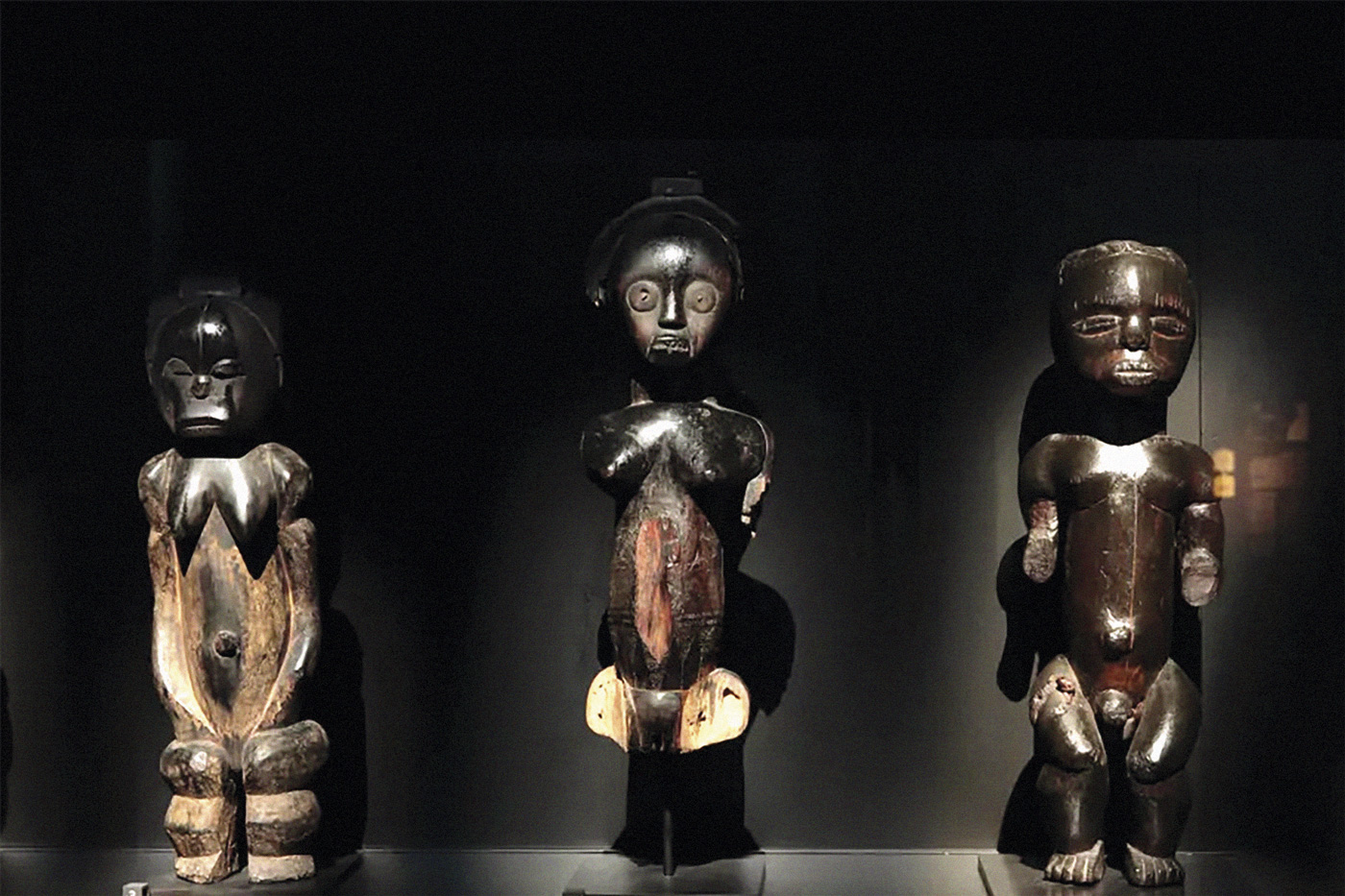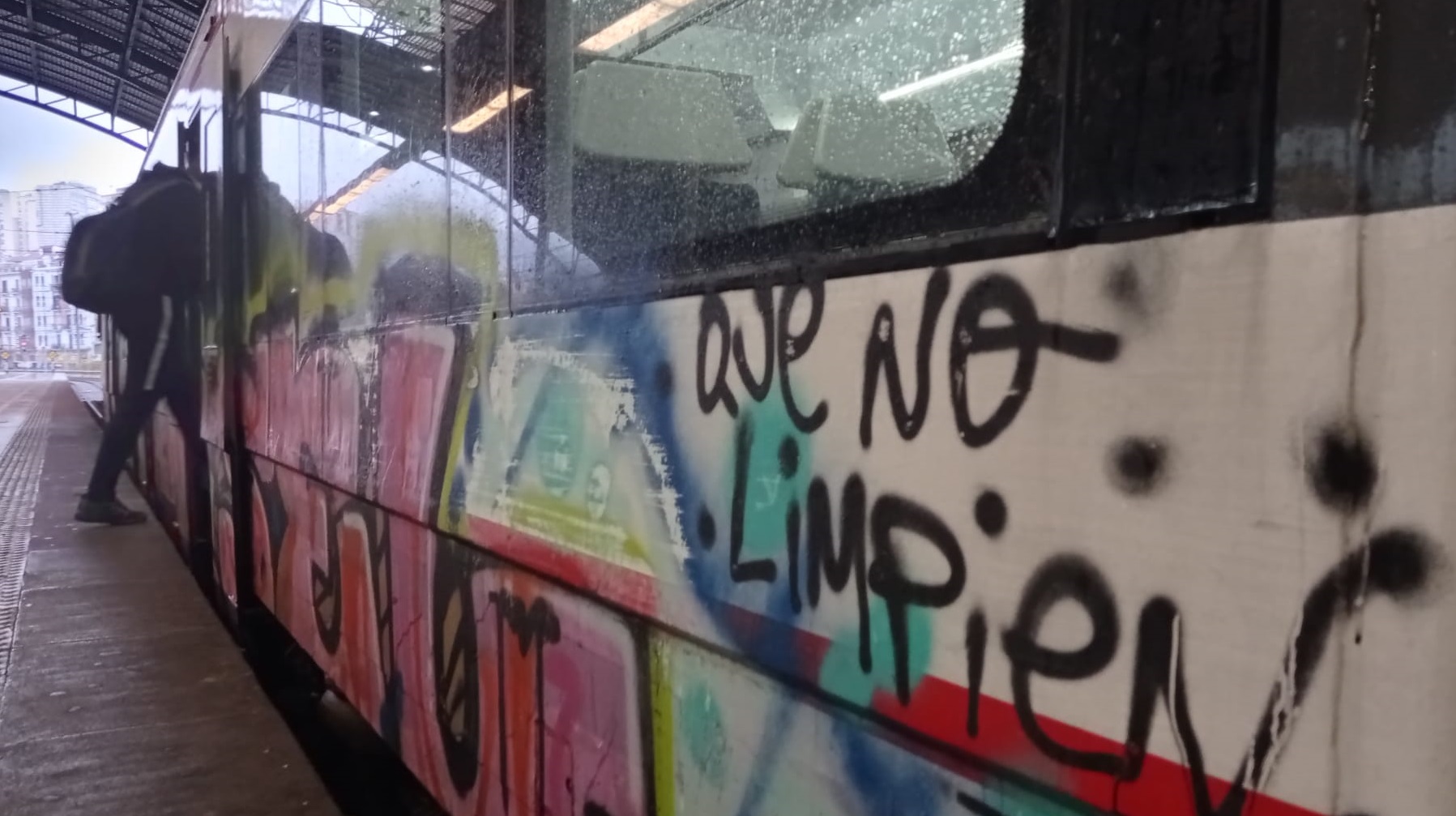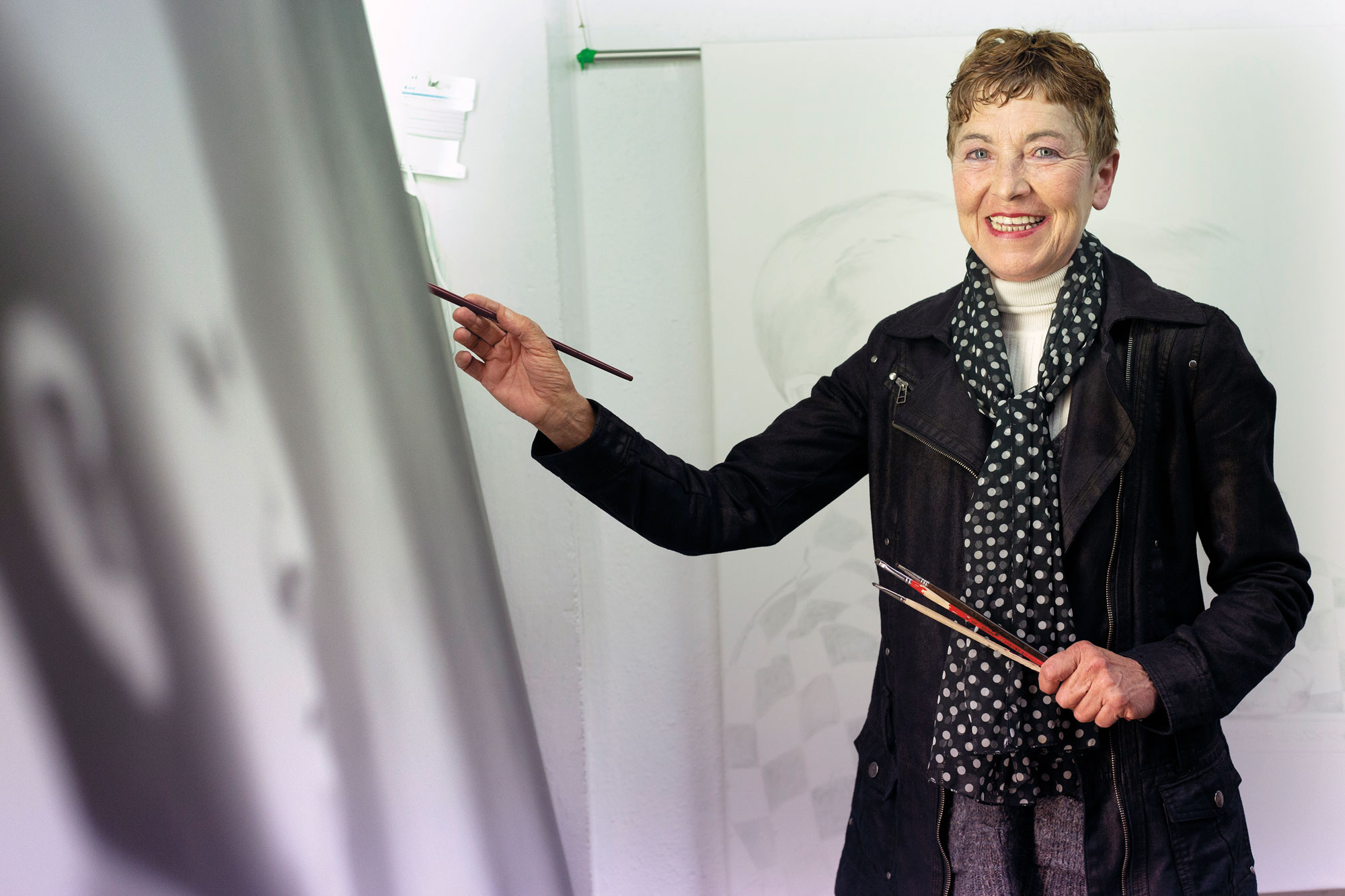"My thing has been to teach in the bar for many years."
- The walls appeared to be filled recently at the Xoko Ona Inn in Azkain. It wasn't a regular exposition of the artist, one artwork here, the other just. The walls were stretched, high and low, full of drawings by Jon Zabaleta, and the universe that he has shaped throughout his life. It was the return to the painted caves. An image that will hardly be repeated.
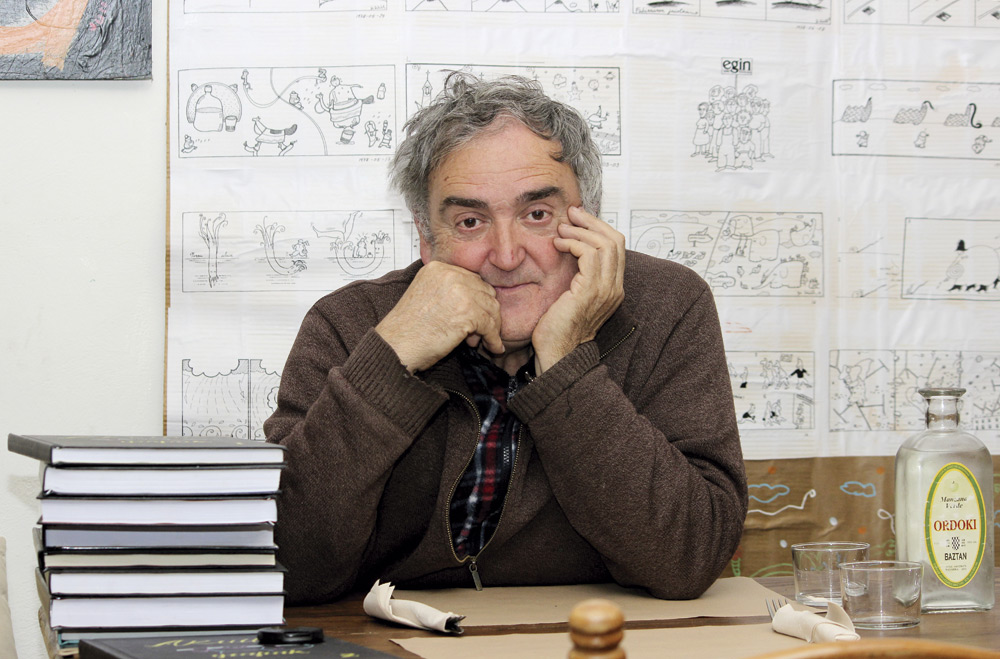
Txikitatik da marrazkilari. 1971tik 74ra, berriz, Oteizak eragindako Debako Arte Eskolan ikasi zuen. Hamaika aldizkaritan ageri dira Jon Zabaletaren lanak: Zeruko Argia, Anaitasuna, Hitz, Berriak, Garaia, Habe… Baita Egin eta Euskaldunon Egunkaria kazetetan eta Euskadi Sioux eta Ipurbeltz agerkari grafikoetan ere. Makina bat haur liburu ilustratu ditu. Komikigintza, zinema esperimentala eta mimo-ikuskizuna ere ez zaizkio arrotz. Disko azalak hamaika ditu ilustratuak. Manuel–memoria publikatu zuen 2005ean, bere obra jasotzen duen katalogoa. 2014an, Dabilen Elea saria jaso zuen.
What do you say, you've closed a cycle with the exhibition you've made at the Azkain hostel?
Of course I have closed the road started at the end of 1975! By the end of that year, I was in Paris. Franco was agonizing and people were walking back and forth. I was going to England with another friend. But I also had friends in Paris, and there I did. There I met more people, some refugees, others working, like Luzien Etxezaharreta. I was full of drawings and someone put me in touch with the Liberation newspaper. They saw my drawings immediately. “You are Euskaldun, right?” The first thing they told me. “What you say is Basque issues. We publish from time to time about Euskal Herria. If you want, we'll put your drawings there. At the same time, one.” They were pages dedicated to the region. Régionale. But I didn't have to publish a drawing at a time, and I went to Le Canard Enchaîné. It was a satirical magazine. When they saw that I was a nationalist, nothing. My job, though, was to tell what we live. And in addition, it was a no-word image, typical of French culture.
Where do you come from in this French image culture?
They came from the newspapers to the hamlet. When the people in the house were coming down from the hamlet to the plaza, sometimes you would give them magazines, some French, where you would see pictures without words. That seemed like pure art to me. To be honest, speaking without words has always seemed to me an art. In France it is of great tradition. And yet, in the fall, the exhibition I did in Azkaine also really liked people. They didn't know me, but they had made photographic exhibits, and they wanted to change the format. The photographer Lascaray from San Juan de Luz told them my story, I went to them, I showed them the drawings, and they became fascinated. “I like this. This too. Also this ...”. So I thought about Vincennes.
Vincennes?
Yes, the time of Paris, the Vincennes University, 1976. An artist drawing images on the wall and the viewer reading those images. But the drawings, here and there, fill the panels. She gets drunk. Very beautiful. And that's what I said to the Azkaingos. “We will put panels and put images and images.” And so I did. I also put the first ones I published in Hitz magazine. He signed akullu at the time. I used rotrine, that is, "aculugraphic"! And since the chicken cooker enters the ox, I, the paper!
From Akullu, your first work.
Yes. Shortly afterwards I came to San Sebastian. By then, they started publishing Berriak magazine. Then there was another newspaper, the Garaia. It was Eugenio Ibarzabal. The art galleries were also in furi-fury, and in one of them, in Donostia, I did an exhibition at Gallery B. Now it is also difficult for me to express things in words, but even more difficult then. My construction was moving inwards. I started drawing, and I had plenty of images coming out. Instead, tell her to complete a sentence and she can't. No wonder I was an anarchist at that time. I did not belong to any political party, and when, for example, they met in Berriak and asked me where I had to go, I replied: “I… I will bring you drawings!” He would fill his boxes with drawings. “Take you, as it suits you. I, in the meantime, will continue to do more.”
You published it every time in magazines. Later, in Egin, every day.
“What? Do we put the table on you?” they asked me, and I said: “No, no, I fix them.” In a word, I was walking in my air, freelance. I was going to work, at first there was a very good environment, I talked to people… “What drawing do you have to do today?” they asked me, we shared ideas, I thought about what they said, they offered me a workplace… I liked it. And I always made my drawing.

So it's your snails and your elephants.
This is the case of the Departmental School of Art. There was everything. Some wanted to work the stone, others engraved it… I also tasted it from them, but mine was drawing. Sit in a corner, take paper and tell stories through drawing. I drew and drew in Deba, I used the pen, because there wasn't a flute yet. I was furious. It was the beginning. Then came Paris and Iparralde and San Sebastian and Egin.
How did you start in Egin?
Pure chance. Walking along the mountain, “Jon! Jon!” Some voice. They were Mariano Ferrer, Donato Unanue and others. Fagolwaukee, Hernani. “Do you know we’re going to make a newspaper?” “I heard something, yes.” “Are you going to make us a drawing to announce the newspaper?” I made the calendar, it became famous. Republished in 2017. I made a house. The people, all working, the bed distributing newspapers with the donkey, using barrels for printing… Since then I have known that Gutenberg also used barrels for printing. One day I made the drawing of the calendar. I left, they liked it, and Mariano Ferrer said: “Would you make a drawing every day?” I said yes. And I remembered snails and elephants. I started them.

They also became famous!
My project was to launch my world into snails and elephants, but I couldn't. I needed to create different worlds, on one I was walking through a galaxy, on the other, then I was back to snails and elephants ... A terrible mess. We lived happily, it was a very joyful time. The world opened up to us, it was full of opportunities, they were opening doors, the legalization of magazines arrived... I, for example, walked through an illegal world for a few months, in clandestine journals, in the North. Many jobs were lost along the way, but also those lost jobs helped to materialize the idea. The universe was made. It was easy to draw one way or another. From this thread were born Ipurbeltz, Irrimarra and the others. They're pre-existing constructions. And I'm sure a lot of things come from magazines and comics and movies that I've seen as a child. Also from what I had seen. I had signed the first works of Akullu, because I had worked with the sting.
In the field?
Yes, yes! My uncle needed someone for the degree, for the plough, the crab, the sloth. And there I was, the slow ox, and I stood in front of him. I always liked that work. The stimulus, on the other hand, was not aggressive. Ours was not a test of oxen.
That's where your first time ends.
Yes. Maybe it was the moment when the cartoonists defined us as communicators. It was art, drawing communicated it. Sometimes the newspaper directors were disdain. Well, put the suspension points here, parentheses and so on! Ha, ha… “You’re publishing!” they told us. I said: "Ah! Publishing.” I mean, don't realize it. That meant taking the director to prominence. Soon the time would come to separate you from you and then to dispose of the newspaper. It was like a decline.
"Sometimes, newspaper directors were wrong. Well, put the suspension points here, parentheses and so on! Ha ha ha! 'You're making editorial,' they told us.
He published it every day in Egin and Euskaldunon Egunkaria.
And in Euskaldunon Egunkaria, I made my last press drawings. Since then, I have not been working in the press again. I went on to Ipurbeltz, but that was the end of the press conference. Then came the internet, the possibility of sharing our fever with people on the net, a window to teach old and new things. I also tried new communication tools: film, music… After seeing so many images and listening to so many melodies, I tried to do experimental work from my home. And that also fills you with the time ... After all, we are in the world for that, right?, to fill the time, and each one does it in his own way: some praying, others making speeches, others throwing wood… all working to fill the time.
You drawing.
Creating. I fill the time of this world in the work of creating. However, I am now quieter. The head also starts to pour fire and smoke, and it is convenient to calm down… I am creating, learning to live, looking for the best way to live. Of course, until the last moment we don't know what we've come to, what we should do, what this world is and how.
The way of living is to draw. Create and show the work done.
But not in the art gallery, for example. For me, that would be doing America. My thing, for many years, was to teach it in the bar. But I also left that time behind. When I taught it at the Xoko Ona, I found it very nice to see and comment on my drawings while people ate or drink coffee. "Wow! What is that drawing? You, have you seen it? What does that mean?” It may be that for many years now, if this planet is maintained, someone will say: “Amazing! That guy did nice things!” By then, the drawings will no longer appear on paper, but will be virtual, like video games, which will change from moment to moment. And if you put on some special glasses, the viewer will see “the universe of Jon Zabaleta,” for example, because someone has taken my characters and put them in motion. 3D And there will appear the baserritars, the barrels in the air, the sound… That will be the future. The future, but very close.

As Antton Olariaga has repeatedly said, Jon Zabaleta is a teacher of color. At first, however, your drawings were published in black and white.
It was a matter of economics, there was no other. It was a printable iron. And walking with an iron, or walking with four, the product was very expensive. On the other hand, at first, the printers were clandestine, hidden in a hole. There was no choice but to draw the drawings in black and white. Anyway, I've always been painting in color. I have boxes and boxes full of drawings, all in color.
As the economy mentions, you are a great connoisseur of the "economy".
That's what Bernardo Atxaga talked about, in a tribute they paid to me [Elea Award underway]. Poverty is ‘economina’. In my case, the economy has always been an economist. Imbalance. For a few years I have given plastic classes to the children of the ikastola. And he would say to me, "Poor man! That child wants to be an artist!” The world of the artist is necessary, it is at the same time a world of dreamy and therapeutic. Art is therapy, above all matas. The artist, for his part, always lives in a precarious situation. They say that there are societies that help the creator more than others. In France, they say, before giving the artist’s name in an office of that kind, you have another work – whether it’s a building goalkeeper or someone’s assistant – that will help you keep creating. That's not in the South.
There are many drawings published in magazines, books and popular posters.
Functional art, they call it. When you ask me, I do. It's an honor. On the other hand, I have left my time here. I have worked a lot, many times without knowing whether I had received the corresponding payment. At first, for example, the editorials reserved our original papers. Quite simply! One day we learned that Catalan dryers asked for copyright. And, in its shadow, we also began to ask for rights, to sign contracts, to receive originals on the return… At first, the militancy work was ours. But we were just a few militants. Others never militated. Always up, promising. When we start to say “we want to live,” you are comedian! But we keep walking.
“Gurasoak Venezuelan izan ziren zenbait urtetan, eta bi anaia barnetegian izan ginen urtebetez. Han, film bat ikusten genuen astean behin. Eta filma ikusi eta ohera joaten ginenean, filma ibiltzen genuen buruan. Irudiak pilatzen zitzaizkigun, eta, bestalde, gure irudimenak are irudi gehiago sortzen zituen. Akordatzen naiz, adibidez, Laurel eta Hardy, Gizena eta Argala saila. Hardy, gizena, handia, plazagizona, hitzontzia. Ondoan, Laurel, iharra, txikia, xaloa… Bata duzu elefantea, bestea barraskiloa. Bata da plaza, etxe barrua bestea. Uste dut hortik ere badutela nire marrazki haiek”.
“Oraintxe hasi naiz ni hizketan libre. Lehen ez nintzen kontalaria. Hala ere, solaskideak ere balio du zerbait ere, eta solaskide trebe askorik ez dago. Mundua duen pertsona bada, gustu ematen du. Gatza badu, zoragarri. Zenbait jenderekin hizketan aritzea, berriz, alferrik da. Ez dute ulertzen!”.
Last week, during the blackout, seeing ourselves vulnerable, we began to investigate many people in order to understand what happened: how does the infrastructure that transports electricity work? Why is it getting old? I am fascinated by the physical phenomenon of electricity... [+]
Eskultura grekoerromatarrek bere garaian zuten itxurak ez du zerikusirik gaurkoarekin. Erabilitako materiala ez zuten bistan uzten. Orain badakigu kolore biziz margotzen zituztela eta jantziak eta apaingarriak ere eransten zizkietela. Bada, Cecilie Brøns Harvard... [+]
Behin batean, gazterik, gidoi nagusia betetzea egokitu zitzaion. Elbira Zipitriaren ikasle izanak, ikastolen mugimendu berriarekin bat egin zuen. Irakasle izan zen artisau baino lehen. Gero, eskulturgile. Egun, musika jotzen du, bere gogoz eta bere buruarentzat. Eta beti, eta 35... [+]
This text comes two years later, but the calamities of drunks are like this. A surprising surprise happened in San Fermín Txikito: I met Maite Ciganda Azcarate, an art restorer and friend of a friend. That night he told me that he had been arranging two figures that could be... [+]
On Monday afternoon, I had already planned two documentaries carried out in the Basque Country. I am not particularly fond of documentaries, but Zinemaldia is often a good opportunity to set aside habits and traditions. I decided on the Pello Gutierrez Peñalba Replica a week... [+]









